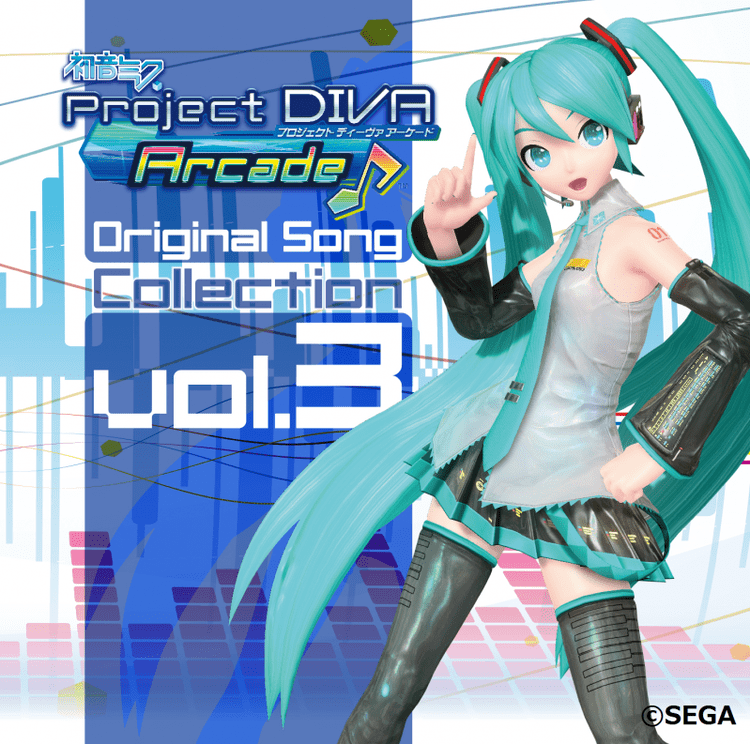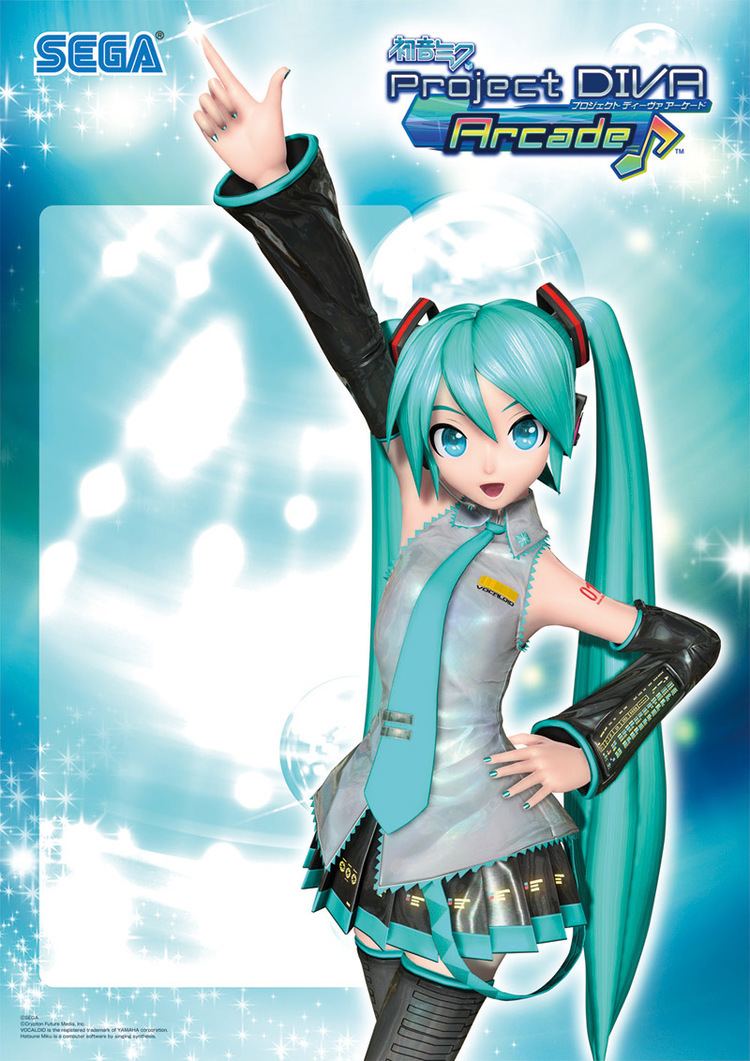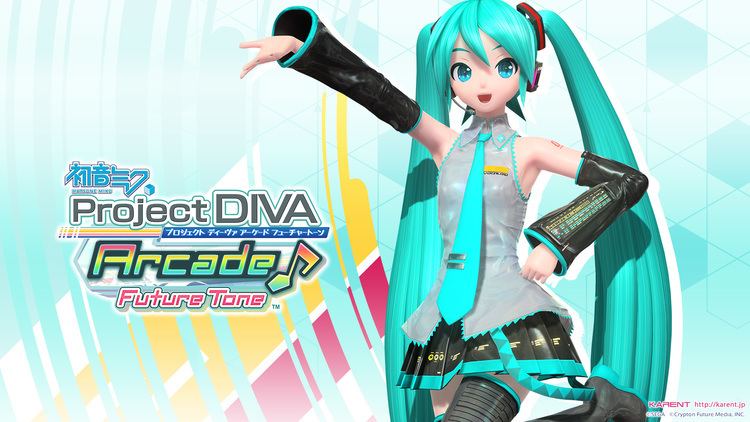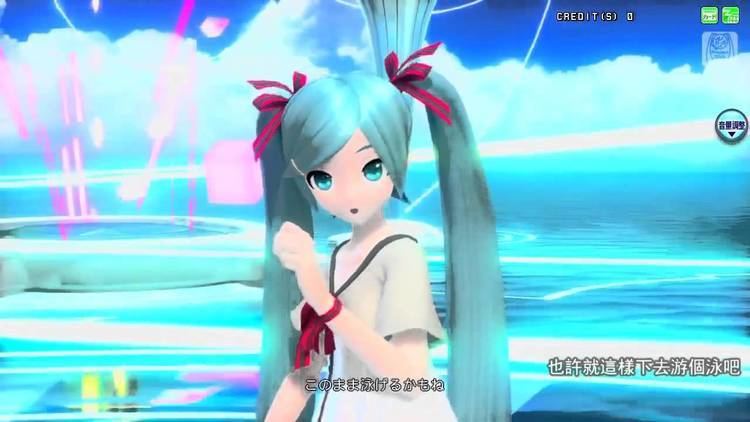9.6 /10 1 Votes
Mode(s) Single-player Initial release date January 2010 Genre Rhythm game | 4.8/5 PlayStation®Store Sound 5.1 channel HD Audio | |||||||||||||||||||||||||||||||||
 | ||||||||||||||||||||||||||||||||||
CPU Pentium Dual-Core E2160 (1.8 GHz)GPU:GeForce 8800GS, 384 MB GDDR3 SDRAM (Shader Model 4.0) Display Resolution:720p/1080p (HDTV) Publishers Sega, Dwango Music Entertainment Similar Hatsune Miku: Project DIVA games, Rhythm games, Other games | ||||||||||||||||||||||||||||||||||
Hatsune miku project diva arcade future tone the disappearance of hatsune miku hi speed
Hatsune Miku: Project DIVA Arcade (初音ミク -Project DIVA Arcade-) is a 2010 arcade rhythm game created by Sega and Crypton Future Media for arcade machines. The game is a port of the 2009 video game, Hatsune Miku: Project DIVA, with updated visuals and was released on January, 2010 in Japan with limited international release in countries such as Singapore. Like the original the game primarily makes use of Vocaloids, a series of singing synthesizer software, and the songs created using these vocaloids most notably the virtual-diva Vocaloid Hatsune Miku.
Contents
- Hatsune miku project diva arcade future tone the disappearance of hatsune miku hi speed
- Hatsune miku project diva arcade future tone sadistic music factory
- Gameplay
- IC card function and DivaNet
- Development
- Versions
- PlayStation 4 version
- Songs
- References

A sequel titled Hatsune Miku: Project DIVA Arcade Future Tone (初音ミク -Project DIVA Arcade Future Tone-) was released on November 21, 2013. Notable changes include upgraded graphics and physics, a Touch Slider panel for arrow shaped notes and new songs, as well as running on the Sega Nu arcade board. The arcade game has been ported to PlayStation 4 under the title Hatsune Miku: Project DIVA Future Tone. The game has been released digitally in two versions on June 23, 2016 in Japan.

Hatsune miku project diva arcade future tone sadistic music factory
Gameplay

As the game is a port of the PlayStation Portable games, the gameplay is relatively the same as the original. The signature PlayStation buttons, cross, circle, square and triangle are now the 4 large buttons on the machine's panel, and players push those buttons to play the games. Unlike the handheld versions of the game, players can hold a button or buttons for an unlimited time when the game indicates to hold a certain note. This will allow players to receive a bonus which continuely increases the score until the player releases one of the held button or a "Max Hold Bonus" is granted. Another difference is that multiple buttons can be hit at the same time up to all four buttons. The arcade version features songs from both Hatsune Miku: Project DIVA series and Hatsune Miku and Future Stars: Project Mirai, along with a variety of original songs not included in either of the handheld versions. The Promotional Videos (PVs) for the game, which are the videos playing in the background during a song have been updated and re-rendered for the game bearing a similar resemblance to the Dreamy Theatre versions of the PVs. Players have the ability to choose from a reel of songs and select their difficulty before playing a song, similar to a Dance Dance Revolution arcade game. The four difficulties are Easy, Normal, Hard, and Extreme, as seen in Project DIVA 2nd.
IC card function and Diva.Net

This arcade game utilizes an IC card function. Players can select to obtain a Project DIVA Arcade access card from any machine. This card will open more functions for use in Project DIVA Arcade, many of those functions resembling features in the hand-held games. With an access card, players will be able to save and load arcade data, select module outfits for use in the game, select a player name, and more. Vocaloid Points (VP) can also be accumulated through successful plays. VP can be used for gaining features, like modules, or changing player's name. Access Card holders can also participate in trials, similar to the console versions of Dance Dance Revolution. In these three-tier trials, named "Clear Trial", "Great Clear Trial", and "Perfect Clear Trial" by difficulty, the player must bet a certain amount of VP. If the player pass a trial, the VP will be kept, and receive the amount the player bet. If the trial is lost, the amount of VP bet is deducted from the total. Clearing "Perfect Clear Trial" will also net a large sum of VP.

Also, during Access Card creation, the game will ask the player to create a user name and password. This will be registered on the Internet and allows an Access Card holder to gain access to the Project DIVA Arcade Diva.Net. Here, an Access Card holder can edit data and perform many and more of the functions that a Project DIVA Arcade machine can do. However, an Access Card holder must first accumulate 10 non-consecutive plays on any Project DIVA Arcade machine with an Internet connection before they can use many of Diva.Net's functions. Once 10 plays are accumulated, the Access Card holder will gain 30-day access to all of Diva.Net's functions. Access to Diva.Net can only be performed this way, and one gains another 30 days of access every 10 plays. This "access" is known as a Diva.Net Right. Upon first play, a Card holder can automatically obtain a Diva.Net Right once. Losing one's Right does not affect the data, but the Card holder is unable to change it through Diva.Net until another Right is obtained.
Development
Project DIVA Arcade first began development on the Virtua Fighter 5 engine, with a Hatsune Miku model being created in the engine with Dural as a base and then with the attributes changes to look like Miku instead. At the Summer 2009 Miku Festival, a prototype of Project DIVA Arcade was made using the Virtua Fighter 5 running on the Sega Lindbergh arcade board. Subsequently, the game became a full-fledged project at Sega and development branched off from Virtua Fighter 5 and was transferred to the newer RingEdge arcade boards that then debut as a prototype at a Spring 2010 Miku Fan event. Most changes made were with regards to the game's graphics and animation effects such as particles and motion blur.
Sega announced that Hatsune Miku: Project DIVA would be coming to arcades on October 5, 2009 and along with it a plea to fans to submit their own music for the game's track list. This was done between October 15 and October 31 where fans would upload their video to the Project DIVA Nico Nico Channel. These songs needed to be original songs and not remixes or variations of existing songs that were between 2 and a half minutes to 3 and a half minutes. The winners would then have their songs chosen by the game's development staff and then used in the release of the game. In addition, the website Piapro even held an event/contest for artists to submit their own created Vocaloid songs as well as illustrations for the game. Tripshots designed the machine which will include four buttons which has the same gameplay as its predecessor on the PSP. Yume Yume from Hatsune Miku feat. Future Stars Project Mirai (3DS) was available on February 2013.
Versions
PlayStation 4 version
On September 15, 2015, during the SCEJA Press Conference at Tokyo Game Show 2015, SEGA announced that the company was porting Hatsune Miku: Project DIVA Arcade Future Tone to the PlayStation 4 under the title Hatsune Miku: Project DIVA Future Tone. On May 27, 2016, a new trailer was released on the official YouTube channel of the series, which announced that there will be two versions of the game, Future Sound and Colorful Tone. Future Sound includes 127 songs from the Project DIVA series, while 95 songs from the Arcade and Project mirai series can be played in Colorful Tone. In total, over 340 outfits can be unlocked across both versions. The games support a screen resolution of 1080p at a refresh rate of 60 frames per second. Both Future Sound and Colorful Tone, as well as the base Prelude software which also serves as a demo, were released in Japan on June 23, 2016 as digital software in the PlayStation Store.
Songs
There is a total of 238 songs in the game as of December 2016. Many songs are songs from previous Project DIVA games, including Project mirai. There are also songs exclusive to this game, including ones made from the Edit Mode in the games, animated PVs, and PVs made from Sega.
